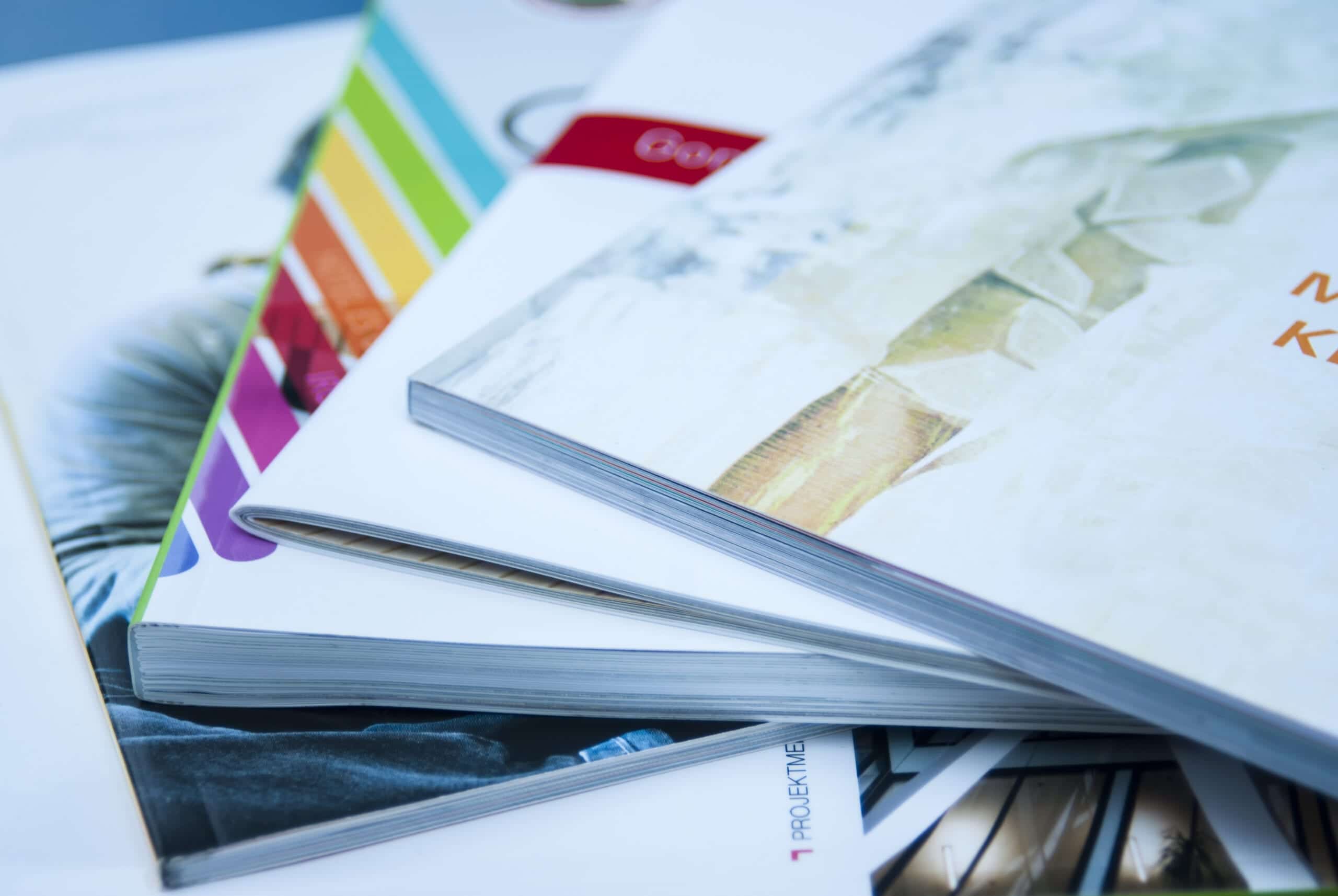In part 1 of our Print Jargon series we summarised the many names for different types of leaflet folds. Who ever knew that some of those existed?
In the final instalment, we’ll uncover some of the different terminology for booklet finishing. Even though we predominantly resort to our phones for sources of information, we’ll always be in contact with a booklet of some kind, whether that’s a free promo booklet in your next online delivery or a training manual from work.
Booklet finishing
- Binding – this term means the joining of leafs or signatures* together with either wire, glue or other means.
- Case Bind – to bind using glue to hold signatures to a case made of binder board covered with fabric, plastic or leather. This term is also known as cloth bind, edition bind, hard bind and hard cover.
- Loop Wire Stitching – This is a conventional wire stitch (staple) but with a loop which allows the brochure to be contained in a ring binder without drilling holes in the brochure.
- Round Back Bind – to casebind with a rounded (convex) spine, as compared to flat back bind.
- Perfect Bind – to bind sheets that have been ground at the spine and are held to the cover by glue. This is also called adhesive bind, paper bind, patent bind, perfecting bind, soft bind, and soft cover.
- Saddle Stitch – to bind by stapling sheets together where they fold at the spine, as compared to side stitch. These are also called pamphlet stitch, saddle wire and stitch bind.
- Wiro Bind – this is otherwise known as spiral or ring binding and uses coated metal wires to bind documents together.
*A signature is a section of sheets folded in half, to be worked into the binding as a unit.
So, there we have it! There are several ways your booklet can be bound together depending on the purpose of the booklet.

Here are a few other print specific words and their meanings…
Bleed
It all sounds a bit dramatic, but all it means in the print world is the allowance on a drawing or printing plate that extends the plate beyond the trimmed and finished size, to ensure a clean cut off (usually 3mm).
Creep
This word sounds a bit freaky too but it’s only the bulk of paper in a saddle stitched booklet which causes the inner pages to extend further out than the outer pages when folded. The ‘creep’ is usually then trimmed off!
DPI
Here’s a print related acronym that causes some confusion. DPI means ‘Dots per inch’ and when anybody asks what the DPI is, they’re asking how many dots there are in a printed inch. The more dots there are, the higher the quality of the print.
Flood
In the print world, flood is to completely print a sheet with ink or varnish. Flooding with ink is also called ‘painting the sheet’.
GSM/Grammage
You may have heard paper categorised in different paper weights eg. From 80gsm – 400gsm and above. GSM is the basis weight of paper in grams per square meter. As you might guess, the smaller the number the lighter the paper is.
80 – 100gsm: This is the weight range of standard office paper, used in your desktop laser printer or photocopier and would rarely be used for brochures.
110 – 120gsm: The weight will increase slightly for more formal paper documents and this weight is commonly used for stationery paper such as letterheads and compliment slips.
130 – 170gsm: This weight range is more durable and is usually used for posters, leaflets, flyers and pages inside a book.
170 – 200gsm: You’ll find that this paper weight delivers a printed product that’s a bit more luxurious. It’s the midway point between paper and card and it can be used for brochure covers, good quality posters and double-sided flyers.
250 – 300gsm: This weight is where we begin to move away from paper and into the realms of card (board) weights. This weight adds a quality finish to a book if used as a cover.
350 – 400gsm: Good quality business cards are usually between this weight range. 350gsm can also be used as a cover for your book but it’s important to remember the stitching and folding implications of using heavy board as a cover.
400gsm and above: Some luxury business cards are printed on weights up to 1190gsm. Business cards would be considered thick and very good quality at above 400gsm.
Hopefully there’s plenty of fresh terms for you to digest there!




